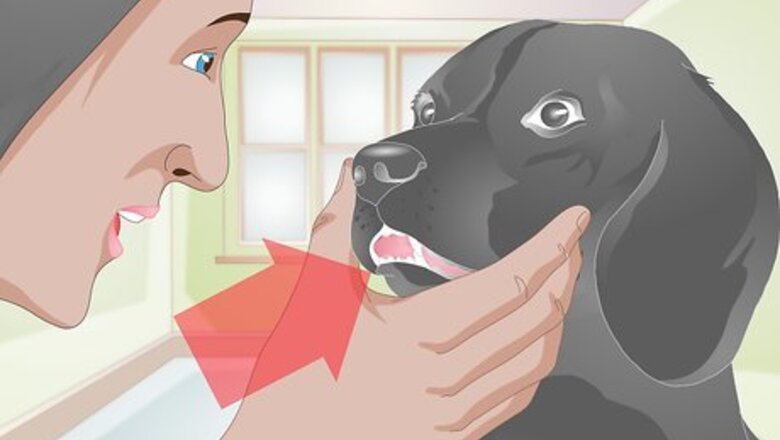
views
Identifying a Broken Tooth
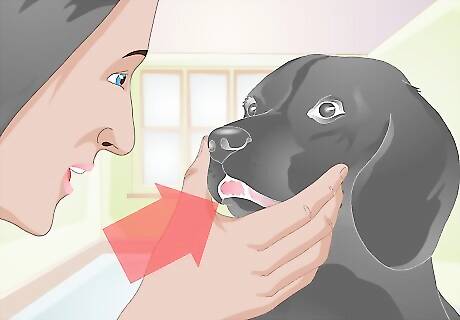
Inspect your dog's mouth regularly. In order to find broken teeth, or other dental problems, you should inspect your dog's mouth regularly. This means looking at the state of its teeth, gums, and other oral tissues. The easiest time to do this is while you brush your dog's teeth, which should be done every day if possible. Regular inspection will allow you to understand what your dog's teeth look like when they are in good shape, so that you can more easily identify problems. The best time to get an understanding of what they look like when they are in good shape is right after a veterinary dental cleaning. Dog's mouths are rarely perfect. Understand what normal is for your particular dog. For example, dogs' gums are usually pink but some dogs have gums with pigment in them, which means they are spotted with brown areas. This is perfectly normal but you need to be aware of this so that you do not think these areas represent a problem. You may need to gradually acclimate your dog to dental care, including to allowing you to inspect its teeth. Take the process slowly and don't assume that your dog will automatically let you look all around its mouth.
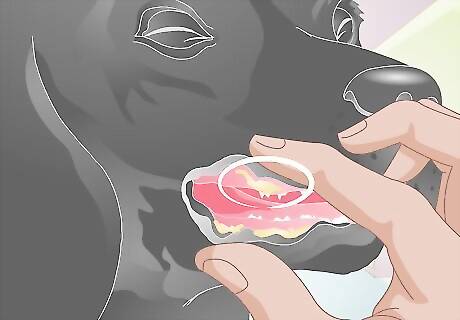
Look for signs of infection in the mouth. If your dog has a broken tooth that goes untreated, it can become infected. Particularly, a tooth that is broken below the gum line can easily get infected if bacteria enters the area. Signs of infection in the mouth include discharge, really bad breath, bleeding gums, and swollen gums.
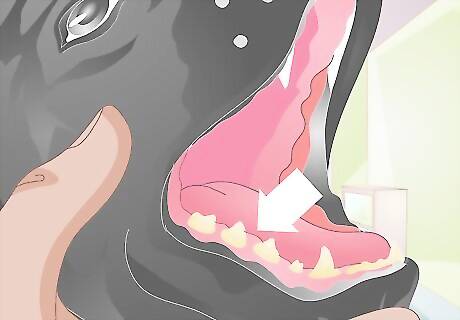
Identify swelling around the mouth and jaw. If the tooth or jaw has become infected, there may be external symptoms you can spot. These can include swelling around the mouth and jaw and warmness around that swelling. These are symptoms of a serious problem that needs to be treated immediately. Your dog may have an infected tooth and not get these symptoms. Every dog, and every infection, is different, and thus the way an infection advances will vary.
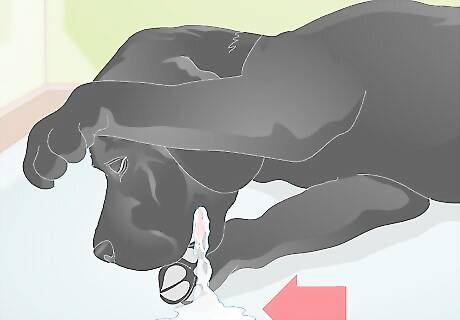
Pay attention to signs of dental pain. An infection inside of the mouth will cause the dog to be in pain. Signs that your dog is in pain include excessive drooling, tenderness of the face, depression or fearfulness, and hesitation to eat or drink. Many dogs will not show specific outward signs that they are in pain. From an evolutionary perspective, showing pain indicated weakness, so dogs can be very good at hiding their pain at all cost.
Getting Veterinary Treatment
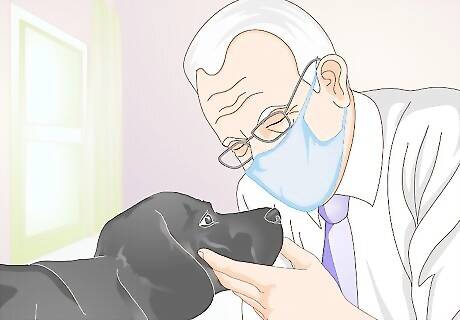
Take your dog to its veterinarian. A broken tooth should be assessed by a veterinarian. Whether that tooth is fractured down into the root and gums or the break doesn't extend down into the gums, a veterinarian will be able to assess the situation and figure out the best treatment for your pet. After the veterinarian discusses the issue with your and looks at your dog's tooth, he or she is likely to do an x-ray to see if the root and gums are impacted by the fracture. Sometimes a broken tooth does not seem like a big deal but it is actually causing your dog a lot of pain. It's best to get the tooth checked by a veterinarian to make sure that the tooth isn't causing the dog pain that the dog is masking. If your dog breaks off the tip of its tooth the dentin of that tooth, which is the tooth material below the enamel, will be exposed. This area contains a lot of nerves, so your dog will be in pain if this area is exposed. Additionally, this part of the tooth no longer has protective material to keep cavities at bay.
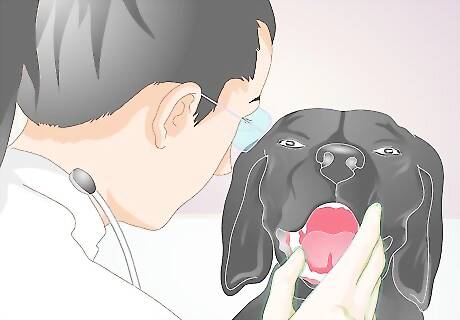
Consult with a veterinary dentist. If your regular veterinarian does not have a lot of experience with dentistry, or if the tooth is severely infected and needs invasive treatment, then you may want to go to a veterinary dentist for treatment. For example, a veterinary dentist will be able to perform dental surgery on a severely fractured and infected tooth. Discuss with your regular veterinarian whether they have a lot of experience with severe dental fractures. If they do not, ask for a referral to a veterinary dentist in your area.
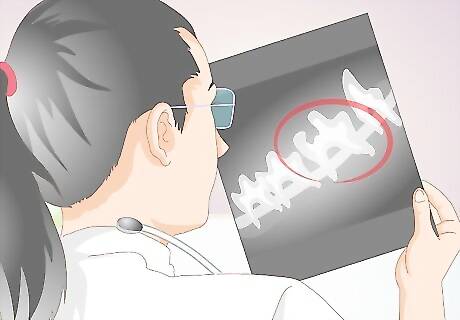
Discuss the option of sealing the tooth. Depending on the severity of the break, and which tooth is broken, your veterinary dentist may give your several options for treatment. If the fracture does not impact the gums or roots, then the tooth can usually just be sealed. Sealing a tooth is usually a specialist procedure, so you will want to have it performed buy a veterinary dentist. They should x-ray the tooth to make sure it is still alive and then, if it is alive, apply a bonded sealant to keep out bacteria that could lead to decay or pain.

Consider a root canal for a tooth that is fractured below the gum line. Root canals can be used to save fractured teeth. During a root canal the infected tissue is removed, the tooth is sealed, and the area is medicated to keep additional infections away. This procedure allows your dog to keep its tooth and to avoid the trauma of surgical removal. Your dog will need to undergo anesthesia for this procedure. With dogs that are younger than 18 months old it may be recommended that they undergo vital pulp therapy. This therapy is used because a dog under 18 months old does not have enough teeth root development to undergo a root canal. Vital pulp therapy keeps the tooth alive long enough so that the tooth can develop enough to undergo a root canal.
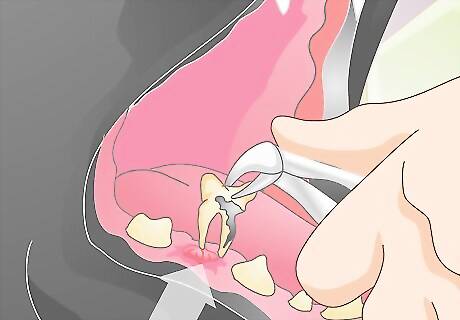
Discuss whether tooth extraction is required. Tooth extraction is likely to be suggested if your dog's tooth is severely fractured and infected. Dog teeth have very large roots, so teeth extraction can be an invasive and serious surgery that goes deep into your dog's jaw. Recovery from this surgery can be extensive and having a tooth extracted that your dog uses for chewing can impact its ability to eat.
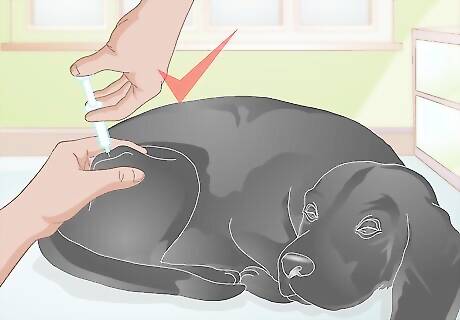
Give your dog proper aftercare. Depending on the treatment that your dog received, recovery and aftercare will vary. Be sure to follow your veterinarian's instructions for aftercare, including what medications to give your dog and when to give those medications. With tooth sealing or a root canal, your dog will most likely recover very quickly. They will be able to resume eating and drinking the same day and pain should be minimal afterwords. If your dog underwent anesthesia, it will need your support while it wakes up and recovers. Some dogs do not react well to anesthesia, so it may throw up or be disoriented for quite awhile. If your dog has undergone a tooth removal, it is likely to have the hardest and longest recovery. Your veterinarian will prescribe your dog pain killers and antibiotics that will need to be given to the dog on a regular basis. Additionally, you will need to keep an eye on the surgical site to make sure that the wound is healing well and not getting infected.















Comments
0 comment